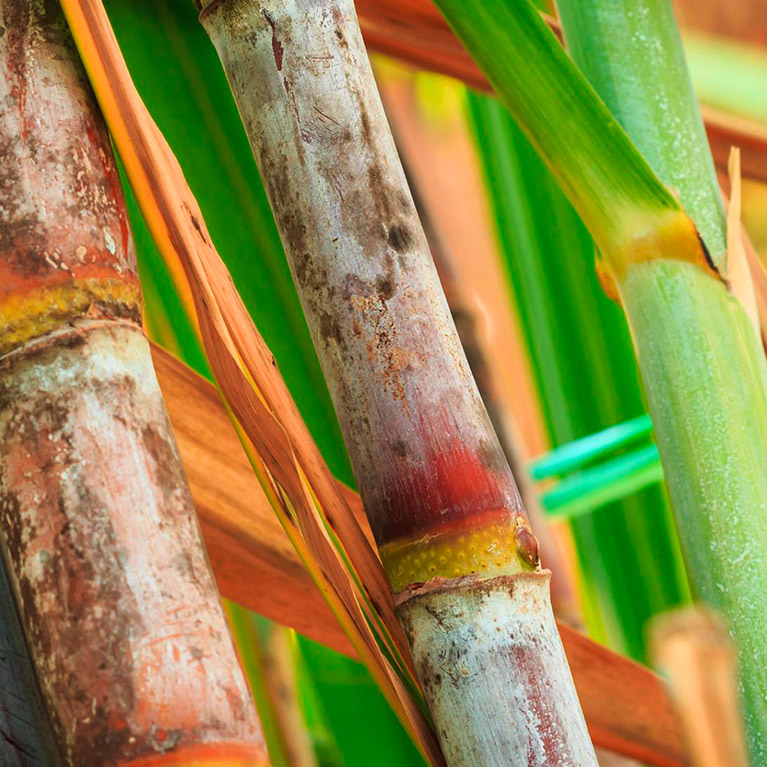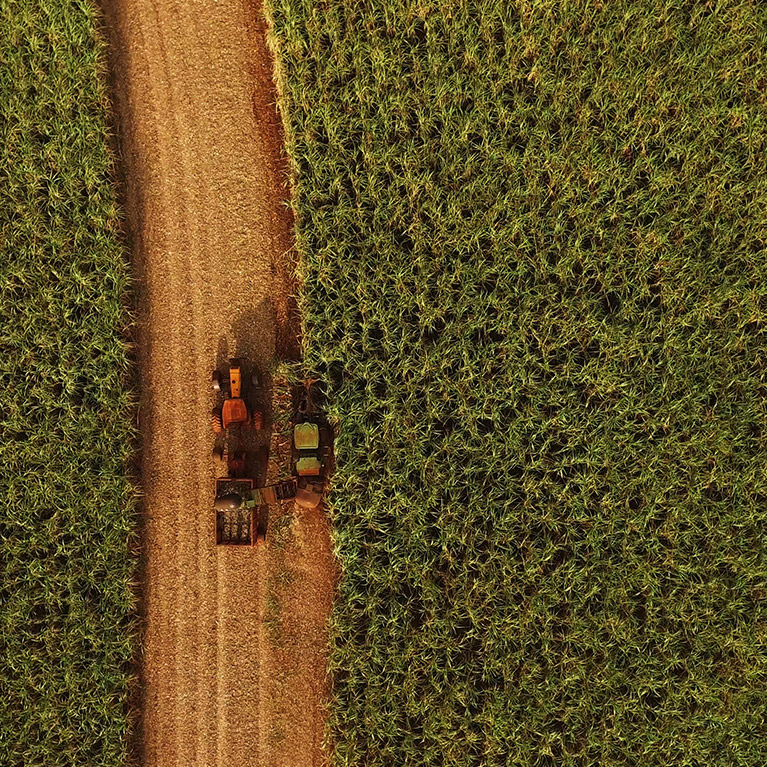Originally published on Rural Voice
The sugar industry, which often occupies centre stage in politics, and the sugarcane farmers together are flipping the script and moving fast towards a significant stage of its journey — driving the country towards self-reliance in clean energy through ethanol production. This, of course, depends on the central and state governments implementing long-term thinking in policy and tax matters.
If the pace continues, it would be possible to attain the target of 20 per cent ethanol blending by the year 2025. The level of ethanol blending will be 8.5 per cent in the current season (2020-21) while it has reached 10 per cent in Uttar Pradesh (UP). This appeared quite impossible a few years ago because the ethanol blending level in the country stood at only 4.2 per cent in 2017-18. But, thanks to steps like the differential pricing of ethanol, the subsidised loans available to the industry, and fast clearances to distillery projects, the sugar industry is hugely increasing the production capacity of ethanol. It will produce about 325 crore litres of ethanol in the current season while the sugar production will be about 300 lakh tonnes. Cane juice equivalent to sugar production of more than 20 lakh tonnes will be used for ethanol production directly.
We shall have to follow the example of Brazil if we want to get rid of the crisis often generated by the fall in sugar prices due to its excess production in the country and the consequent delay in payment of arrears to the cane farmers. Brazil, too, will produce about 300 lakh tonnes of sugar this year but its ethanol production will be more than ten times that of ours. A lot of auto companies there manufacture flex-fuel vehicles, which run on up to 100 per cent ethanol. The minimum ethanol blending in Brazil is 26 per cent. These blends are called E-100 and E-26. That is, the first category consists completely of ethanol while the second has 26 per cent ethanol blended in petrol. The reason behind this is the policy of sugar mills in Brazil of making ethanol directly from 65 per cent of cane juice. We have only now started making ethanol directly from cane juice.
We have the opportunity to develop UP, Maharashtra and northern Karnataka into “mini-Brazil”. But there are certain practical problems, too, on the policy level here that need to be resolved if we are to grab this opportunity. The government has fixed a nationwide target of ethanol blending, but it is produced only in select states. Therefore, ethanol is transported to other states. It would be better to increase the blending level and consume them in those very producing states. For example, the blending level may be increased to 15 per cent or above in states like UP and Maharashtra. The blending is done at the depot level and hence the need to increase the blending capacity at the depots. Transporting ethanol to all the states from the producing states cannot be justified. The real purpose is to reduce the import of petroleum products, increase the use of green fuel, and reduce costs. Sources in the industry say that greater blending in the producing states will lead to a reduction in transportation costs and also be more comfortable for the sugar industry.
283 crore litres of ethanol worth about Rs 15,800 crore rupees will be bought by the petroleum marketing companies from the sugar mills during the current season. Thus, the earnings from ethanol are turning into a big source of revenue for the sugar industry for payments to be made to the farmers.
The increase in distillery capacity due to the encouragement given to ethanol blending in the 2018 government policy and the current petrol prices of more than 90 rupees a litre have prepared a new ground for the industry and the farmers. Besides, separate prices have been fixed for ethanol obtained from C molasses (common molasses), the one from B-heavy molasses and that directly from cane juice. In the usual process of sugar production, using a tonne of cane, the sugar mill earns Rs 4,167.51 at the current prices of the 115 kg of sugar and the ethanol made from its by-product molasses. In the case of B-heavy molasses, the quantity of sugar produced reduces to 100 kg, but that of ethanol becomes 19.42 litres. The increased amount of ethanol fetches more price and the sugar mill earns Rs 4,318.79. If ethanol is made directly from cane juice (syrup), a tonne of sugarcane produces 76 litres of ethanol. The government has fixed its price at Rs 62.65 per litre and thus the earning level of the mill reaches Rs 4761.40 through this process. This means the sugar mills now have a new and better alternative, in which the mill need not produce sugar at all. As per the prices fixed by the government, the sugar mills will get a price of Rs 45.69 per litre for ethanol produced from C molasses, Rs 57.61 for that from B-heavy molasses and Rs 62.65 for that produced directly from cane juice.
The petroleum marketing companies will buy about 283 crore litres of ethanol in the current season (December 2020 to November 2021). These companies had bought 167 crore litres of ethanol last year (2019-20), 179 crore litres in 2018-19 and 150.50 crore litres in 2017-18. In the year 2013-14, they had bought only 38 crore litres of ethanol for blending.
As per the sugar industry, of the 283 crore litres of ethanol produced by sugar mills during the current season (2020-21), 59.7 crore litres will come from C molasses. The mills will produce 181 crore litres from B-heavy molasses and 42.2 crore litres directly from cane juice. Owing to better prices, the focus of sugar mills is increasing on making ethanol directly from cane juice.
In order to make this new exercise economically viable, the government will have to set right the prices and the tax system. The price of petrol is Rs 91.17 per litre in Delhi currently. Given this price, the ethanol produced directly from cane juice (syrup) and priced at Rs 62.65 per litre may be considered economical. At present petrol attracts an excise duty of Rs 32.90 and in Delhi a Value-Added Tax (VAT) of Rs 21.04 per litre. The sugar industry says that ethanol does not require any subsidy at the current prices; only, the government will have to keep lower tax rates. Ethanol contains 99.5 per cent alcohol and attracts a Goods and Services Tax (GST) of 5 per cent. In comparison, rectified spirit has an alcohol purity of 95-96 per cent. It is used in making alcohol, which attracts different excise rates in different states. The petroleum companies cannot get an input tax credit for the 5 per cent GST on ethanol as petroleum products are outside the ambit of GST. They attract excise duty and VAT at the final product (petrol) level where ethanol, too, has been blended. Ethanol is blended in petrol at the depot level, not at the refinery level. People in the sugar industry say that petroleum should be taxed at the refinery level. There is no need to tax the ethanol blended in it once again. This will make the blending of ethanol economically more viable. With 5 per cent GST on ethanol, petroleum marketing companies will be encouraged to blend more of ethanol.
The production capacity of ethanol has increased from 215 crore litres in 2014-15 to 426.6 crore litres in 2019-20. Most of the production capacity increase is due to the 10 per cent target of ethanol fixed in 2018 under the new biofuel programme of the Modi government and the fiscal incentives that have been given. The blending level of ethanol in petrol stood at merely 4.2 per cent then (in 2017-18). The target of 20 per cent blending had been set for the year 2030, but now this deadline has been advanced to 2025. The 10 per cent blending target has been set for the year 2022.
Roshan Lal Tamak, Executive Director and CEO (Sugar) of DCM Shriram Ltd, said to RuralVoice, “The government’s new blending and price policy for ethanol is proving to be a game-changer.” With an investment of Rs 292 crores, his company has set up a distillery of 200 kilolitres per day (klpd) capacity along with the sugar mill at Ajbapur in Lakhimpur Khiri, UP. The production started here in December 2020. This distillery has the largest capacity in the state at present.
Says Roshan Lal Tamak, “The promotion of ethanol production can, on the one hand, increase the availability of green fuel at the domestic level itself and will, on the other, increase the potential of the mills to make timely payments to the sugarcane producers.”
In information shared with the stock exchanges recently, Balrampur Sugar Mills Ltd, another big sugar industry group in UP, has said that it is going to set up a 320 klpd distillery at Maijapur in Gonda district, wherein Rs 320 crores will be invested. Ethanol will be made here from cane juice (syrup) for six months and from grains for the other six. The company says that it will not produce sugar in this mill but only ethanol. This step is a big indication of how ethanol is going to change the business strategy of the sugar industry. That is, ethanol is going to emerge as a huge alternative in regulating sugar production in the days to come and by means of this, it may be possible to fix the availability of sugar in tune with its consumption.
Sugar mills obtain 13.5 to 14 per cent total fermentable sugar (TFS) by crushing sugarcane. A tonne of sugar produces 115 kg of sugar while 2-2.5 per cent TFS goes to C molasses because it cannot be converted to crystallised form. You get 10.67 litres of ethanol from C molasses. In another alternative, having obtained 100 kg of sugar with approximately 1.5 per cent TFS left in the B-heavy molasses, you get a production of 19.42 litres of ethanol. While in the third alternative — that of making ethanol directly from cane juice (syrup) — 76 litres of ethanol is produced because the TFS content in it is 13.5 to 14 per cent.
The prevailing ex-factory price of sugar is Rs 32 per kg, due to which several sugar mills believe that it is profitable to make ethanol from B-heavy molasses. During the current season (2020-21), DCM Shriram Ltd group is making ethanol at the B-heavy molasses level equivalent to 80,000 tonnes of sugar. In 2017-18, the company had produced 6.8 lakh tonnes of sugar and 0.68 crore litres of ethanol. Whereas in the current season, it has estimated a production of 5.9 lakh tonnes of sugar and 12.7 crore litres of ethanol.
According to the Indian Sugar Mills Association (ISMA), 20.10 lakh tonnes of sugar will be diverted to making ethanol at the B-heavy molasses level during the current season. Of this, 6.74 lakh tonnes will be diverted in UP, 6.55 lakh tonnes in Maharashtra and 5.41 lakh tonnes in Karnataka. Sugar production has been estimated at about 300 lakh tonnes during the current season. On the other hand, the annual consumption of sugar in the country ranges between 255 and 260 lakh tonnes. Given this situation, it is possible that still more sugar may be diverted to ethanol production.
The government has estimated that 900 crore litres of ethanol will be required for 20 per cent blending in petrol by the year 2025. Of this, 610 crore litres will be supplied by the sugar mills while 290 crore litres will come from the grain-based distilleries. It is estimated that the blending level will remain at 8.5 per cent during the current season. As per the estimates for the current season, sugar mills will produce 325 crore litres of ethanol, of which they will provide 283 crore litres for blending.
Photo credit: Rural Voice




